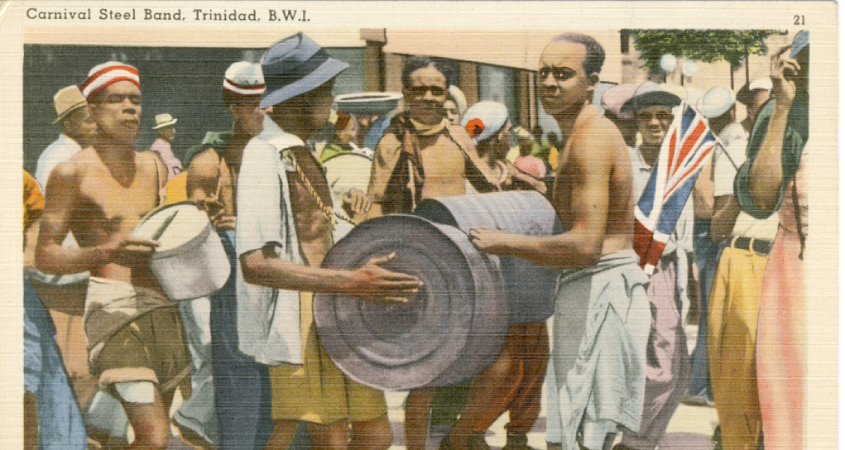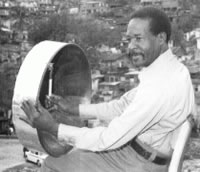
The Remarkable History of Steelpan in Trinidad: From Struggle to Global Recognition
The steelpan, also known as the steel drum, is the only acoustic musical instrument invented in the 20th century. Born in Trinidad and Tobago, this revolutionary instrument has transformed from a symbol of rebellion into a globally celebrated musical marvel. Today, steelpan music is embraced worldwide, but its journey to recognition was filled with challenges, rivalries, and unwavering resilience.
The Origins of Steelpan: A Cultural Rebellion
The steelpan’s history dates back to the early 20th century, when the colonial authorities banned the use of African drums, fearing that they could incite uprisings.

Undeterred, Trinidadians created tamboo bamboo bands, crafting percussive sounds from cut bamboo stems.
However, as bamboo proved fragile, the transition to metal percussion instruments began.
By the 1940s steelpan pioneers like Winston “Spree” Simon and Ellie Mannette discovered how to tune metal drums to produce melodious tones, giving birth to the steelpan instrument we know today.


Their innovation would soon define the Caribbean music scene, influencing genres like Calypso and Soca.
Steelband Clashes: The Rivalry That Shaped an Artform
In its early years, steelpan was synonymous with intense steelband rivalries. Bands like Invaders, Casablanca, Desperadoes, and Tokyo were more than just music groups—they were cultural factions, fiercely competing for dominance during Carnival.
Clashes between these groups often turned violent, earning the steelpan community a notorious reputation.
Amidst this rivalry, legendary love stories also emerged. One such tale is of a Casablanca panman who fell in love with an Invaders supporter, defying social expectations. These relationships, like the music itself, symbolized the unbreakable passion that steelpan fostered among its followers.
Overcoming Struggles: The Fight for Steelpan Recognition
For years, high and middle-class society shunned steelpan, dismissing it as the pastime of rebellious youth. Pannists were often harassed, and police raids on panyards were common.
Yet, despite these challenges, steelpan musicians continued refining their craft, demonstrating that steelpan could achieve the sophistication of a symphony orchestra.
Dr. Eric Williams: Championing Steelpan in Trinidad
A pivotal moment came with Dr. Eric Williams, Trinidad and Tobago’s first Prime Minister. Recognizing steelpan’s potential, he made an urgent appeal to corporate Trinidad to support the artform.
This call for sponsorship led to financial backing, paving the way for steelband competitions and international tours.
Steelpan’s Global Rise: From Local Rejection to International Fame

Today, the steelpan is a recognized and respected musical instrument worldwide.
Once ridiculed and rejected, it is now a central element in Caribbean music and is featured in international orchestras, universities, and prestigious festivals.
Competitions like Panorama attract top-tier talent and global audiences.
Famous bands such as Desperadoes, Phase II Pan Groove, Renegades, and Trinidad All Stars have taken steelpan music to global stages, showcasing its versatility and depth.
Meanwhile, arrangers like Clive Bradley and Len “Boogsie” Sharpe have crafted compositions that rival those of classical music legends.
The Legacy of Steelpan: A Triumph of Culture and Innovation
The steelpan’s journey from oppression to global recognition is a story of resilience, passion, and artistic brilliance. This unique Caribbean instrument, once associated with defiance, now represents national pride and cultural innovation.
The sound of steelpan, once heard only in the panyards of Port of Spain, now resonates in concert halls and international music festivals.
It is a testament to the unyielding spirit of the Trinidadian people, who transformed a marginalized artform into a world-class musical genre.
Steelpan is no longer just a Trinidadian invention—it is a global treasure, celebrated for its rhythmic brilliance and rich history.
Its rise from the ashes of colonial suppression to the heights of worldwide acclaim proves that music transcends boundaries, unites cultures, and stands the test of time.
Oh what a great article on the steelpan, or the way I know it, the steel drum. It took me back a bit when as kids, we used to use the pots and pans in the kitchen to pretend we were playing on steel drums.
I had no idea that it was first developed in Trinidad and Tobago and is steeped so much in the local history. Thank you for sharing this education post on this unique Caribbean musical instrument. I will be sharing it with the musicians in my circle.
Really glad you enjoyed the article and I appreciate your willingness to share the information within your circle. You may also enjoy this article on Panorama … Trinidad & Tobago’s annual steelpan competition held during Carnival.